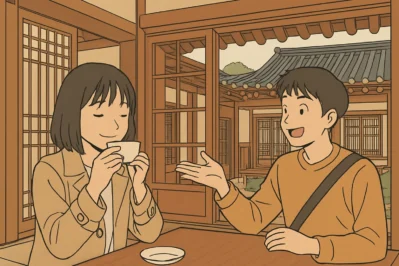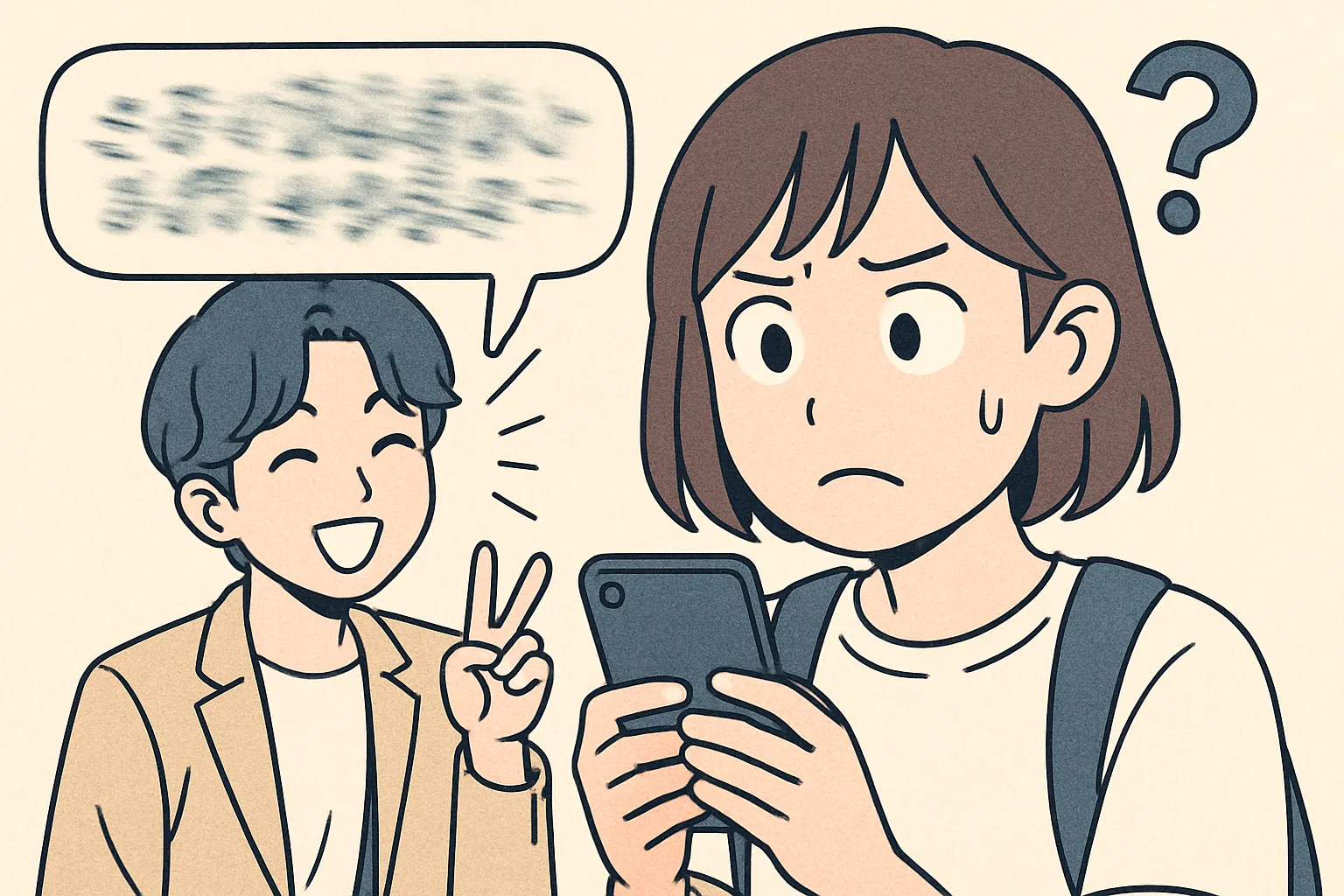Sip Like a Local: Your Guide to Korean Teahouses!
Hello! This is Maeil Hangeul, here to upgrade your Korean skills!
Have you ever wanted to find a quiet, beautiful place to relax in Korea, away from the busy city life? Today, we’re going to learn how to visit a traditional Korean teahouse (전통 찻집, jeontong chatjip). These places are perfect for a calm afternoon with friends or a peaceful moment alone.
These days in Korea, retro is the new cool! Many young people are visiting traditional teahouses to enjoy the unique atmosphere and take beautiful photos for Instagram. Let’s learn the essential phrases so you can join the trend!
Core Expressions You Need to Know
Here are three key expressions that will make your teahouse visit smooth and fun!
1. 분위기 좋다 (Bunwigi jota)
* Pronunciation [Romanized]: [Boo-nwi-gi jo-ta]
* English Meaning: The atmosphere is good / It has a great vibe.
* Detailed Explanation: This is a super common and useful phrase in Korea! ‘분위기’ (bunwigi) means “atmosphere” or “vibe.” You can use ‘분위기 좋다’ to compliment any place with a nice feeling—a cozy café, a fancy restaurant, or a beautiful park. It’s a casual expression perfect for use with friends.
2. ~ㄹ/을까요? (~l/eulkkayo?)
* Pronunciation [Romanized]: [-l/eul-kka-yo?]
* English Meaning: Shall we…? / Should I…?
* Detailed Explanation: This is a grammar pattern you attach to the end of a verb to make a friendly suggestion. It’s a soft and polite way to ask for someone’s opinion.
* If the verb stem ends in a vowel, add -ㄹ까요? (e.g., 가다 → 갈까요? Shall we go?).
* If the verb stem ends in a consonant, add -을까요? (e.g., 먹다 → 먹을까요? Shall we eat?).
* Today’s example: 차 한잔 할까요? (Cha hanjan halkkayo?) – Shall we have a cup of tea?
3. 추천해 주세요 (Chucheonhae juseyo)
* Pronunciation [Romanized]: [Choo-cheon-hae joo-se-yo]
* English Meaning: Please recommend something.
* Detailed Explanation: Feeling overwhelmed by the menu? No problem! This is the magic phrase. ‘추천’ (chucheon) means “recommendation.” Use this polite phrase to ask the staff for their suggestion. It’s a great way to try something new and popular!
Example Dialogue
Let’s see how these phrases work in a real conversation. Friends A and B have just found a beautiful teahouse in Insadong.
A: 와, 여기 정말 예쁘다! 분위기 좋다!
(Wa, yeogi jeongmal yeppeuda! Bunwigi jota!)
Wow, this place is so pretty! It has a great vibe!
B: 맞아. 우리 차 한잔 할까요?
(Maja. Uri cha hanjan halkkayo?)
I agree. Shall we have a cup of tea?
A: 좋아! 메뉴가 너무 많아. 뭘 마시지?
(Joa! Menyuga neomu mana. Mwol masiji?)
Sounds good! There are so many things on the menu. What should we drink?
B: (To the staff) 저기요. 혹시 추천해 주세요?
(Jeogiyo. Hoksi chucheonhae juseyo?)
(To the staff) Excuse me. Could you please recommend something?
Culture Tip & Trend Deep Dive
- Finding Your ‘Gaemseong’ (갬성): Korean Gen Z loves places with a special aesthetic, which they call ‘갬성’ (gaemseong). It’s a Korean-style pronunciation of the English word “emotion” but means something closer to “vibe” or “aesthetic.” Traditional teahouses are considered top-tier ‘gaemseong’ spots. When you upload your photos, try using hashtags like #전통찻집 (traditional teahouse) and #분위기맛집 (a place famous for its great atmosphere) to seem like a local!
- What to Order: If the staff recommends something, it might be 유자차 (yuja-cha), a sweet and citrusy citron tea, or 오미자차 (omija-cha), a unique “five-flavor berry” tea that is sweet, sour, salty, bitter, and spicy all at once! Teas often come with small, traditional Korean sweets called 한과 (hangwa).
Wrap-up & Practice Time!
Great job today! You’ve learned how to find a teahouse with a good vibe (분위기 좋다), suggest getting tea with a friend (차 한잔 할까요?), and ask for help ordering (추천해 주세요).
Now, let’s practice!
- Fill in the blank: You walk into a beautiful café. You turn to your friend and say:
“Wow, the _______ here is amazing!” (와, 여기 _______가 정말 좋아요!) -
Make a sentence: You are looking at a menu with your friend and want to suggest eating bibimbap. How would you say, “Shall we eat bibimbap?” using the
~ㄹ/을까요?pattern?
You are now ready to explore the beautiful traditional teahouses of Korea!
Why not try leaving a comment below using one of the phrases you learned today? Happy studying






